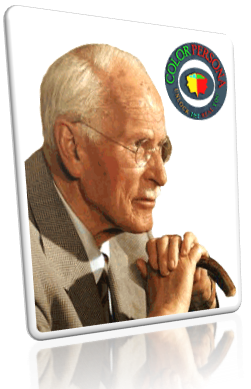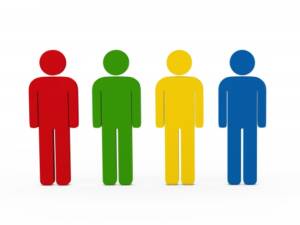Insight into Our Colour Model
Background
One of the most popular ways of categorising human temperament was established by the Greek physician Hippocrates (c. 460 – c. 370 BC), who introduced the concept of the Four Temperaments where four bodily fluids were thought to affect human personality traits and behaviours. These fluid compositions were represented in four different colours. Modern medicine may not support the purported link between bodily fluids and one’s behavioural traits. However, this theory has paved the way for studies on human personality to use colour coding as a graphical way to illustrate personality types and behavioural traits.

Color Persona maps the four colours to the temperaments, as a way of broadly classifying peoples’ emotional attitudes and foundations of their personality. As human beings, we all have a wide range of different emotions such a happiness, anger, sadness, and so on. At times we want to be alone and other times we prefer the company of other people. The temperaments are made up of a combination of these emotions. According to Carl G. Jung’s theory of psychological types [Jung, 1921], people can be characterised by their preference of general attitude:
- How people Interact with others – Introvert/Ambivert and Extravert – energies
- How people make decisions – Thinking and Feeling
- How people gather information – Sensing and Intuition
The Four Colour Energies
Color Persona believes that life is a journey and each of us handles the journey in our own way. We utilise our natural instincts, past experiences, knowledge and attitude to make that journey. Some will find it easy to make the journey and others not so easy. The Color Persona behavioural model has been designed to help support that journey by identifying key areas of preferences, attitudes and behaviours using the 4 colours to represent the 4 Temperaments.
Color Persona uses 4 colours to associate a persons personality and behaviour. We use colour, because it conveys the message simply to everyone. Colour is nothing new and its simple to the core, there is no need to associate the colours to elements like earth, air, fire water, etc etc. Colours are ubiquitous in their own right.
Color Persona uses 4 main vibrant colours namely Blue (Detail), Green (People), Red(Acton) and Yellow(Social). The 4 colours are mapped to the behaviours as shown below:
The intensity of the colour ‘blend‘ energies, gives individuals a unique colour footprint based on the amount of each colour a person possesses; so no one is 100% of any one colour, they have a combination ALL 4 colours.
The reports and charts focus on demonstrating an individuals or a teams Colour score for each of the 4 colours, as well as the the ‘Leading‘ colour and the ‘People’ colour. The Colour footprint allows us to extrapolate a lot about a persons attitude, decision making and how they perceive information.
Introverted Energy
BLUE’s (Detail) are ‘intense’, serious, and ‘deep’ thinkers. They care strongly about things and it is important to them that things are as close to perfection as possible.
Introverted Energy
GREEN’s (People) are calm and submissive; they wish for peace and quiet, a simple life free of worries and conflict. Compromising to achieve peace is more important than being right.
Extraverted Energy
RED’s (Action) are tough, strong, and focused. They set their minds on a goal and strive to achieve it, to get things done. They do not back down when challenged.
Extraverted Energy
YELLOW’s (Action) are fun-loving and easy-going. They believe that people who take things too seriously need to take a chill pill, get a life, go out and have some fun.

